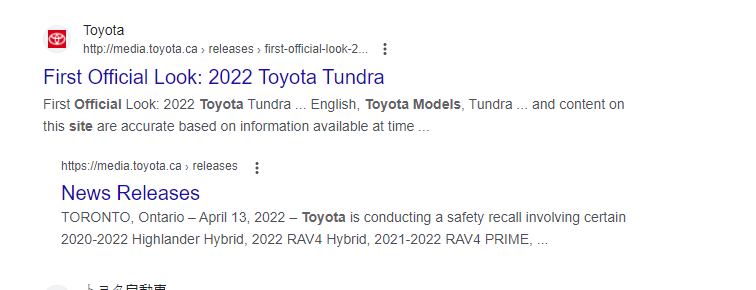As an online-based business owner, you know how crucial it is for your website to appear in search results when clients search for products or services like yours. Nonetheless, appearing in search results isn’t enough; you want to be unique among competitors and attract clicks. Though traditional search engine optimization practices can help enhance your website’s ranking in search results, rich snippets are another tool to count on. So, what are rich snippets?
In this post, we will explain what rich snippets are, how they work, how they can boost your SEO, and why they are important for your site’s visibility and click-through rates.
What Are Rich Snippets?

Image Source: ahrefs.com
Rich snippets are structured data that offer additional information about a webpage’s content directly in search engine results pages (SERPs). This extra information is usually pulled from structured data in a page’s HTML. Rich snippets are usually designed to provide users with an ideal idea of what they can expect on a webpage, even before clicking through to it. Besides, they usually include details such as images, prices, ratings, reviews, and more, depending on the content on the page.
How Can Rich Snippets Boost Your SEO Ranking?
Here is how rich snippets can improve your SEO ranking:

Image Source: beautifulthemes.com
1. Increased Visibility
Rich snippets directly offer more information about your site’s content in search engine results pages. This enhanced visibility can make your site stand out from competitors as well as attract more visits from potential clients.
2. Improved User Experience
Rich snippets improve the user experience by offering visitors to your site additional information about the pages, making it convenient for them to find what they are looking for. This improved user experience can result in lower bounce rates and longer average session durations, both positive signals for search engines.
3. Enhanced Click-Through Rates

Image Source: tassos.gr
Since rich snippets offer more precise information about your site’s content, they may attract more clicks from potential customers looking for specific information. This can improve click-through rates, boosting your site’s overall SEO ranking in Google search results.
4. Better Categorization
Rich snippets can help major search engines better categorize your site’s content, making it easier for them to understand your webpage and how it relates to other online content. This can enhance how relevant and authoritative your site is in search results.
5. Improved Engagement
Rich snippets can have interactive elements such as reviews, star ratings, and pricing that can improve user engagement with your site’s content. This improved engagement can result in more backlinks, social shares, and general visibility, which are positive signals to search engines.
Structured Snippet Examples
1. Courses

Image Source: google.com
For educational sites, structured snippets can offer information about course categories such as science, business, technology, or the arts. The “courses” header promotes classes offered by the educational institution. Besides, items on the list must be specific courses instead of whole degree programs or categories of classes. You could include “creative writing” or “trigonometry,” for instance, but not “economics degree” or “MBA.”
2. Amenities

Image Source: google.com
This structured snippet is often used on vacation rental or travel-related websites like hotels and B&Bs. It can have details like a fitness center, a swimming pool, WiFi availability, and more. For instance, this ad for booking a bed and breakfast via Airbnb uses the “amenities” header, which you can use to showcase a property’s services or facilities.
3. FAQs

Image Source: semrush.com
A frequently asked question (FAQ) snippet shows a list of questions and their answers below your page’s title and description. Dynamic, structured snippets can be used to display FAQs and their answers. This can be handy for sites that offer technical support or other types of customer service. You can get FAQ snippets if you have blog posts or landing pages that include frequently asked questions and answers.
4. Reviews

Image Source: google.com
Structured snippets can also show reviews and ratings for a product, service, or business. The reviews can be about movies, books, recipes, software apps, or local businesses. This can help users make better decisions before they buy something or use a service. The scores from review websites are shown in a review snippet.
5. Models
The “models” structured snippet header allows you to list different models of products, such as cars or personal electronics. The values listed must be specific model names instead of “manufacturer” or “store.” They can’t have additional information such as specs or model year.

Image Source: google.com
The structured snippet example above lists various car models from Toyota.
6. Types
The below example is from the holiday provider TUI. They have used Adwords-structured snippets to showcase the different types of holiday options that they offer. You can see that they provide “family holidays,” “luxury holidays,” “all-inclusive,” and “late deals.”

Image Source: google.com
Another thing you will find is that the initial letter of each word has been capitalized in the title case. This is a recommended practice; however, Google recently published a case study showing that some extensions perform better in sentence cases, so try both ways.
7. Degree Programs
The “degree programs” header allows you to promote specific programs of study an educational institution provides. The degrees on the list must be precise, not generally bachelor’s or master’s, and can’t include additional program details.

Image Source: google.com
Above is an example of Northampton University using the degree program structured snippet extension. You can see that they offer BSc (Hons) Adult Nursing and BSc Education and Teacher Training.
8. Destinations
With the “destinations” header, you can showcase specific places visitors can travel to, such as countries, states, cities, sites or attractions, continents, etc.

Image Source: google.com
Destinations is a highly versatile structured snippet extension that’s not only restricted to the travel industry. It’s also used in situations where there are various training course locations and several other applications.
9. Featured Hotels
The “featured hotels” header allows businesses to display specific hotels they can book for their potential customers. This structured snippet header option is quite limited to the hotel industry. It is geared toward booking sites like Hotels.com and Kayak, travel agencies, and other businesses that help clients find hotels to book or book hotels for their customers.

Image Source: google.com
The values must be the specific names of hotels. Above is a structured snippet example for the “featured hotel” header option.
10. Styles
The “styles” header is handy for listing specific sub-types of a larger product category. The items should all be variants of the same product type. For instance, you can list various styles of boots or coffee mugs.

Image Source: google.com
Above is an example of Nike using structure snippet extensions to showcase different styles of shoes that they stock to their customers. You’ll see that they’ve likely configured structured snippet extensions for relevant style delivery at the ad group level.
How to Implement Rich Snippets
Implementing rich snippets involves adding structured data markup to your site’s HTML code. Here are the steps for implementing rich snippets:

Image Source: elfsight.com
1. Choose the Right Schema Markup
Choosing the right schema markup for your website’s content is the first step in implementing rich snippets. Schema markup is a structured data type ideal for helping search engines interpret the content on your webpage. You can use it to highlight your webpage’s content type, such as products, events, recipes, or reviews.
2. Add the Markup to Your HTML Code.
After choosing the right schema markup, add the markup to your HTML code. This involves adding specific code snippets to your site’s relevant HTML code sections. If you’re unfamiliar with HTML, use Google’s Structured Data Markup Helper to create the markup code.
3. Test Your Markup
Ensure your markup works properly by testing it once you have added it to your webpage. You may use Google’s Structured Data Testing Tool to ensure search engines understand your markup properly.
4. Monitor Your Performance.
Lastly, once your rich snippets have been implemented, you can monitor your website’s performance in search results to determine whether there are improvements in its visibility or click-through rates. Besides, use the Google Search Console tool to monitor how web users interact with your site and identify any issues with rich snippets.
Frequently Asked Questions on What Are Rich Snippets?
1. Do Rich Snippets Enhance SEO?
Yes. In addition to improving the number of visitors who click through to your website, a rich snippet also helps pre-qualify visitors to ensure they find value while on your website. Therefore, though rich snippets might not be an official ranking signal, they can significantly enhance your search engine optimization (SEO).
2. How Many Types of Rich Snippets Are Available?
There are three primary formats of markup code: microdata, JSON-LD, and RDFa. (JSON-LD is the format that Google recommends.) Schema.org is usually committed to the universal vocabulary for structured data. You can rely on the site to write and test your structured data snippet, irrespective of format.
3. What Are the Advantages of Rich Snippets?
Rich snippets usually open up a great opportunity for higher click-through rates, more visibility, and a better ranking in the long run. Although there’s no guarantee that Google will serve up rich search results from your site, adding structured data in the right places will increase the likelihood of a good chance.
4. What is the Main Difference Between Rich Snippets and Schema?
Schema markup is an approach to coding that allows for the inclusion of structured data in a Google search. Rich snippets are a good example of an embedded feature. Schema markup, often known as structured data, is an addition to your website’s code that comprises HTML tags.
5. What Are Rich Snippets in Digital Marketing?
Rich Snippets (or “Rich Results”) are similar to standard Google search results but with more information displayed. This additional information is often pulled from HTML’s structured data. Common rich snippet types include events, reviews, and recipes.
Jacky Chou is an electrical engineer turned marketer. He is the founder of Indexsy, Far & Away, Laurel & Wolf, a couple FBA businesses , and about 40 affiliate sites. He is a proud native of Vancouver, BC, who has been featured on Entrepreneur.com, Forbes, Oberlo and GoDaddy.





